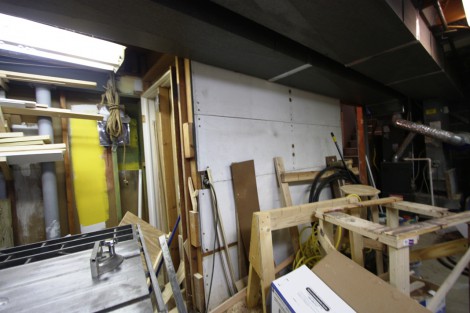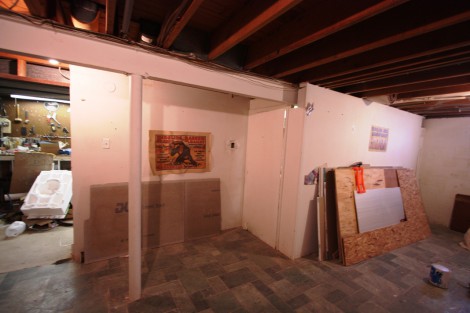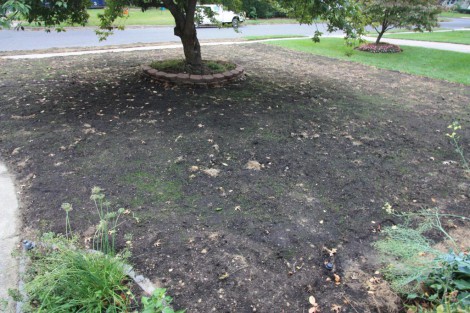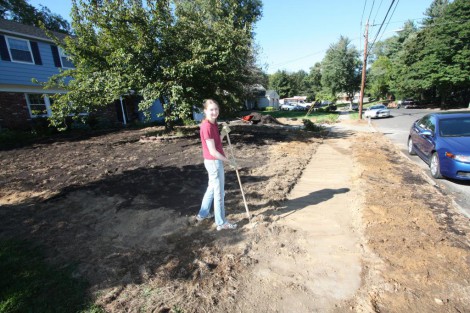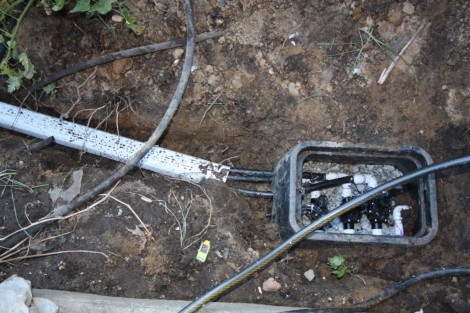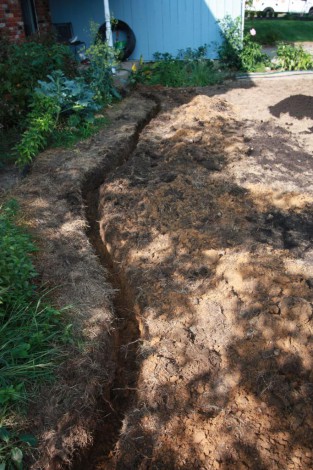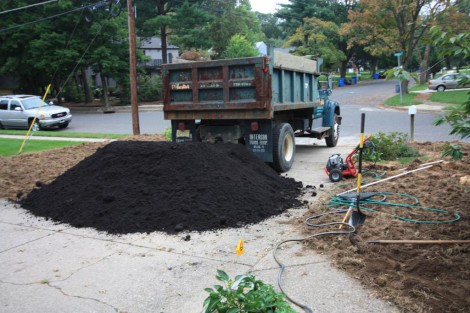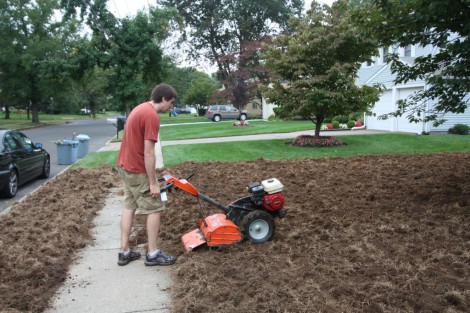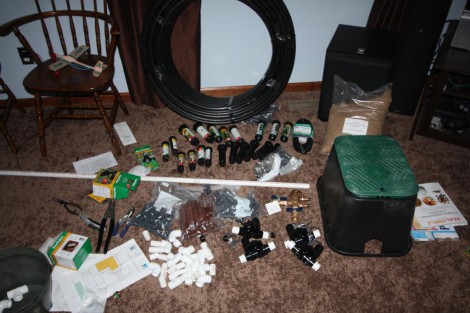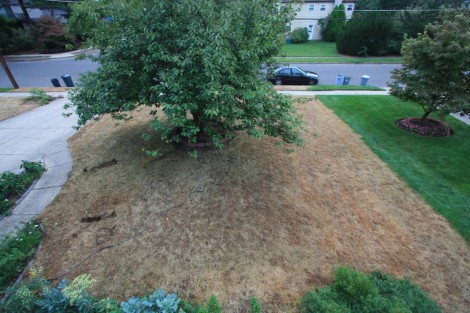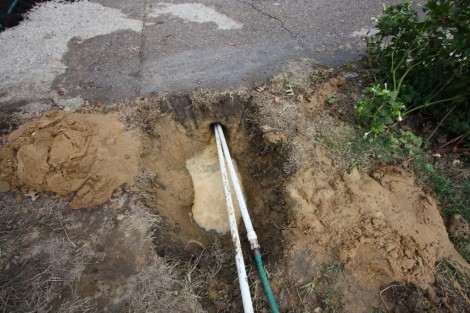
Getting the sprinkler pipe under the driveway turned out to be the most difficult task of the whole project. I came up with the idea to use a water jet nozzle on the end of a long length of pvc pipe to blast a tunnel under the driveway. I’d used this before going under a sidewalk, and thought it would work well under the driveway. Things started off well, with the pipe slowly going in, and digging a nice tunnel. However after about 6′ the pipe got stuck. I couldn’t get it to go any farther in, and even worse I couldn’t pull it back out either.
I tried to use my pressure wash to dig it out, but that didn’t work, so the only thing I could think of was to try again. I hooked up another pipe to the hose, and started digging in. I got to about 6′ without problem, but was unable to free the other pipe. So of course I just kept going. I got to about 8′ when low and behold the pipe got stuck. I was now out of pipe, and out of ideas, so I left it be for a few hours.
In my pondering I thing I figured out what happened, and that is, the sand that our concrete driveway is poured on, makes for a poor tunnel, and although the pipe had no problem digging through it, the tunnel would then collapse on the pipe, getting it firmly stuck. So I bought another section of pipe, and this time tried to go right underneath the concrete instead of about 6″ below it. This finally worked without a problem, and I was able to get the pipe all the way through.
Of course the other two pipes are still stuck there, and will remain that way until the end of time.
